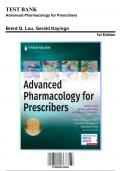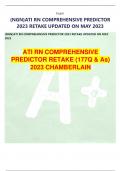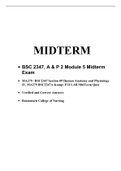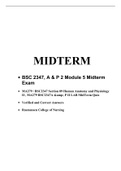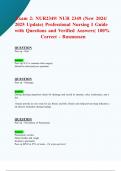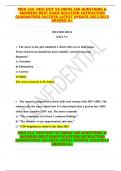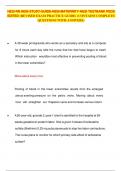Tentamen (uitwerkingen)
Chapter 30: Bedside Assessment and Electronic Documentation Physical Examination and Health Assessment, 8th Edition by Carolyn Jarvis
- Instelling
- Physical Examination And Health Assessment
Physical Examination and Health Assessment, 8th Edition by Carolyn Jarvis MULTIPLE CHOICE 1. At the beginning of rounds when entering the room, what should the nurse do first? a. Check the intravenous (IV) infusion site for swelling or redness. b. Check the infusion pump settings for ac...
[Meer zien]





